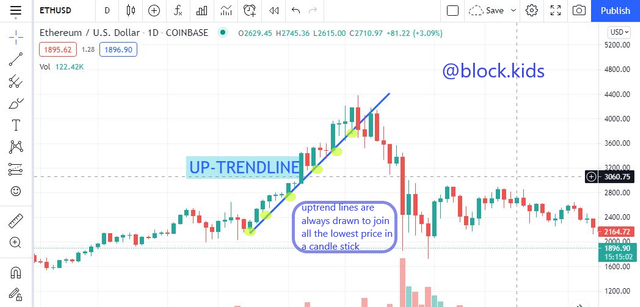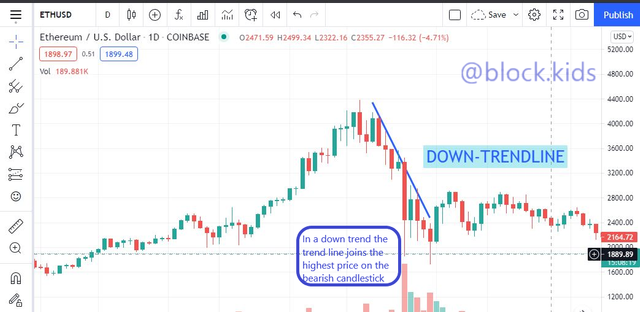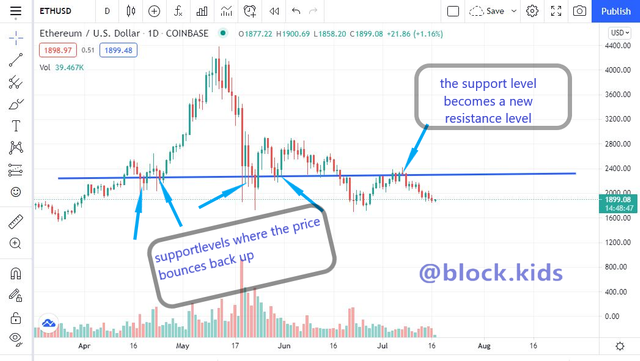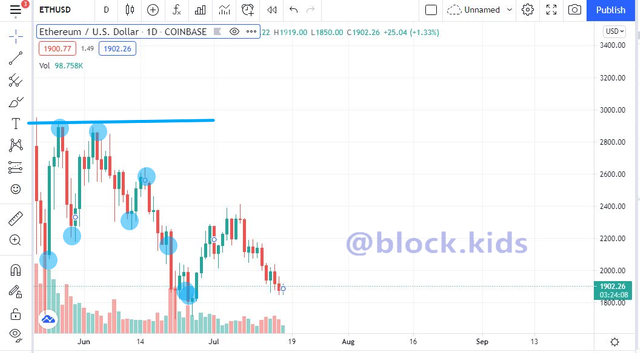
Hey everyone!
Trading can be a very tricky venture, primarily when decisions made during trade are usually based on data from the technical analysis of a commodity's price chart.
This week's lecture has taken us deeper into the realms of technical analysis as it concerns trading cryptocurrencies.
This academic journey guided us to understand better technical analysis's basic terminologies, which help traders deduce vital information from charts before making a trade.
These basic terminologies include trends, supports, resistance, and chart patterns.
A proper understanding of the elements above can be the difference between a profitable trading decision during a trade and a non-profitable one.
I am grateful for this beautiful opportunity created by the crypto academy, which allowed professor@ lenonmc21 to guide steemians through this knowledge-gaining process.
As I respond to the question stated in the lecture post, I will keep my answers short, detailed, and straightforward.

Question 1: Define in your own words what is "Trend" and trend lines and what is their role in charts?

source : pixabay
The term 'trend' is a commonly used word that describes a series of occurrences that tend towards a particular direction. In trading charts, trends are seen from time to time as we often see the general price of an asset or market commodity is driven towards a particular direction by the forces of demand and supply.
Therefore we can easily define a trend in the context of trading cryptocurrency as the movement of a cryptocurrency's price in one particular direction, either up or down.
Many trading analysts have maximized their success rate in trading by predicting the momentum of the various trends on a commodity's price chart.
Types of Trends
There are three major types of trends, including the bullish trend, Bearish trend, and sideways.
The bullish trend is characterized by an uptrend ( higher highs and higher lows)on the chart, which denotes a constant increase in price over a period irrespective of price oscillations.
While a bearish trend is characterized by a downtrend (lower lows and lower highs)on the chart, this trend denotes a constant decrease in price over a period irrespective of price oscillations.
A sideways trend is more of a neutral movement with the price neither increasing or decreasing. Instead, it keeps oscillating in-between a narrow price range. When we experience these sideways trends (AKA no- signs), it is wiser to hold your assets rather than invest.
Trends can occur in various time frames, such as short, intermediate, and long terms. However, analysts use tradelines to understand these trends better.
What are trendlines?
Trend lines are ordinary lines drawn on charts following a set of guidelines to determine the momentum of a trend.
One essential guideline is being drawn to join the ascending minimum points and the descending maximums of price levels on a chart.
The role of trendlines in price charts is to help analysts decipher potential areas of support/resistance when analyzing a chart—understanding where supports and resistance form on the chart can go a long way to reveal the degree of certainty that a trend will continue.

QUESTION 2: Explain how to draw an uptrend line and a downtrend line (Show a screenshot of each).
During a bullish trend, we experience an uptrend whose momentum can be determined by drawing a trend line across the minimums price levels at each trough. This phenomenon is better explained in the screenshot below

source : Tradingview
However, during a bearish trend, the momentum of the downtrend is determined by joining the maximum price levels
at each peak. As explained in the screenshot below

source : Tradingview screenshot

QUESTION 3: Define in your own words what "Supports and Resistances are and how we can identify both zones (Show a screenshot of each one).

source : pixabay
Support and resistance are levels at which the price of a commodity (Cryptocurrency) tends to reverse its current motion consecutively without breaking through that level.
A Support level could be defined as a price level that stops and reverses the fall of the price of a security.
However, a Resistance level could be easily defined as a price level that stops and reverses the rise of the price of a security.
Support and resistance levels are essential tools used in making decisions about a market's price chart. Both price levels are used similarly in making decisions during a trade, depending on whether the market is experiencing a downtrend or an uptrend.
How can we Identify support and resistance levels?
It is pretty easy to spot support and resistance levels on the market price chart. Using trend lines, we can locate price zones that act as a pivot to price movements.
For support levels:
Let's consider a scenario;
The price of a commodity(ETH) keeps experiencing a downtrend(falling from $1000). However, once it has gotten to a particular price zone, it always tends to react or bounce back up(once it gets to $500 - $400, it starts rising again towards $1000). To identify if that zone is truly a support level, draw a trend line across the price reaction zone ($500- $400), if you notice that the price of this commodity (ETH) has bounced off at this same price zone ($500- $400) more than once at different time slots on the chart then this price zone can be regarded as a support level. As shown in the screenshot below.

source : Tradingview screenshot
For resistance levels:
Let's consider a scenario;
The price of a commodity(ETH) keeps experiencing an uptrend( rising from $1000). However, once it has gotten to a particular price zone, it always tends to react or falls back down(once it gets to $1500 - $1400, it starts falling again towards $1000). To identify if that zone is genuinely a Resistance level when a trend line is drawn across the price reaction zone ($1500- $1400), and you notice that the price of this commodity (ETH) has been falling at this same price zone ($1500- $1400) more than once at different time slots on the chart then this price zone ($1500- $1400) can be regarded as a Resistance level. This is shown in the screenshot below

source : Tradingview screenshot
Question 4: Explain in your own words at least two simple chart patterns with screenshots.
Many analysts use patterns formed on the chart to make decisions during trading. This week's lecture Introduced Four simple chart patterns, but in this homework post, I will be explaining two.
- Double Roof:
The double roof pattern or known popularly as the double top is a pattern that signifies the end of a bullish market. This pattern usually occurs at a Resistance level where at least two peaks are formed successively. The commodity price gets to its extreme; then it falls, breaking the "neckline," completes the cycle again before we can now see a downtrend.
This kind of pattern is formed because of the dwindling amount of buyers in the market, which causes a drought in demand for that commodity; hence the price can no longer move in an upward path.

source : Tradingview screenshot
- Double Floor:
The double floor or double bottom pattern is also a reversal pattern like the earlier explained double top; however, they each occur in two opposite directions.
This pattern usually signifies the end of a bearish market. It is formed after the price bounces off a support level and rising to create its first bearish peak only to complete the cycle again, and finally, the price will rise above the "neckline " formed after the first bearish peak.
This kind of pattern is formed because of an increasing number of willing buyers in the market, which causes a surplus in demand for that commodity; hence, the price can only move upward.

source : Tradingview screenshot
Conclusion
Trading can be fun, depending on how well a trader understands the concept of technical analysis.
From trend lines to chart patterns, they are all interrelated, and one concept enlightens you on the others.
This week's lecture was fun, and I will conclude by saying thank you to Professor @ lenonmc21 and the whole of the crypto academy.